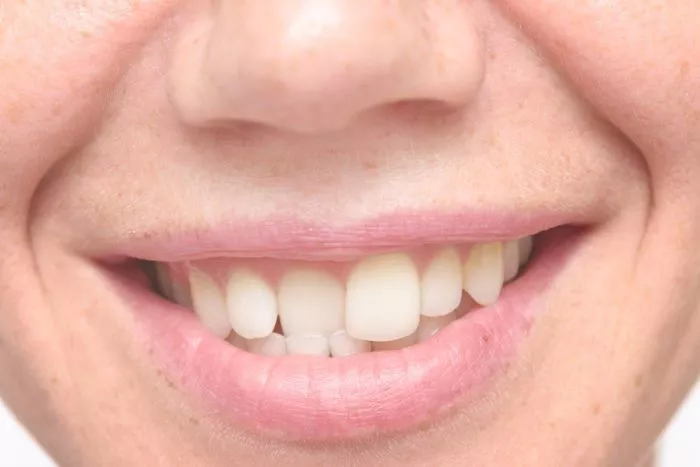Orthodontic treatment is a significant commitment to achieving a healthy, aligned smile. However, even after months or years of wearing braces or aligners, some patients experience a phenomenon known as orthodontic relapse. This term refers to the shifting of teeth back to their original positions after the removal of orthodontic devices. Understanding the causes, risk factors, and preventive measures is essential for ensuring lasting results from your orthodontic treatment.
What is Orthodontic Relapse?
Orthodontic relapse refers to the tendency of teeth to shift back to their original positions after orthodontic treatment, such as braces or aligners. Even after achieving a well-aligned smile, without proper post-treatment care, the teeth may gradually return to their previous misalignment. This phenomenon is a common challenge faced by many orthodontic patients and can result in a less desirable smile or functional problems. Understanding the causes and prevention strategies is key to maintaining long-term orthodontic success.
What Causes Orthodontic Relapse?
Orthodontic relapse occurs for several reasons. After treatment, the bones and tissues around the teeth are still adjusting to the new positions, and without proper retention, teeth can move back. Several factors contribute to this shifting process:
Natural Teeth Movement: Even after treatment, teeth can continue to move naturally over time, especially if they were initially misaligned.
Insufficient Retention: The most common cause of relapse is the failure to wear retainers as prescribed. Retainers help stabilize the teeth in their new positions.
Age-Related Changes: As people age, their teeth can naturally shift due to changes in the mouth’s structure and bone density.
Habits: Certain oral habits, such as teeth grinding, biting nails, or using a thumb, can put pressure on teeth and cause them to move.
How Does Orthodontic Relapse Affect Your Smile?
Orthodontic relapse can affect both the appearance and the functionality of your smile. Teeth may gradually return to their pre-treatment positions, causing a less attractive smile and possibly reintroducing issues such as:
Misalignment: Teeth may become crooked or uneven once again, compromising the appearance of your smile.
Difficulty in Cleaning: Misaligned teeth are harder to clean, which may increase the risk of cavities and gum disease.
Improper Bite: A shift in teeth can lead to bite issues, such as overbites, underbites, or crossbites, which may affect chewing and speaking.
How to Prevent Orthodontic Relapse
Preventing orthodontic relapse requires careful attention and commitment. Here are a few essential tips to help maintain the results of your orthodontic treatment:
Wear Your Retainer as Prescribed: One of the most important steps in preventing relapse is consistently wearing your retainer. Retainers help stabilize the teeth in their new positions and prevent them from shifting back.
Follow-Up Appointments: Regular visits to your orthodontist are crucial for ensuring your teeth remain in place. Your orthodontist can make necessary adjustments to your retainer and check for any signs of relapse.
Maintain Oral Hygiene: Good oral hygiene plays a significant role in preventing relapse. By keeping your teeth and gums healthy, you reduce the risk of tooth decay and gum disease, which can contribute to tooth movement.
Avoid Harmful Habits: Habits such as teeth grinding or biting hard objects should be avoided to prevent pressure on your teeth. Consider using a mouthguard if you grind your teeth at night.
Orthodontic Retainers: Your Best Defense Against Relapse
Retainers are essential in preventing orthodontic relapse. They help maintain the new positions of your teeth after the removal of braces or aligners. There are two main types of retainers:
Fixed Retainers: These are bonded to the back of your teeth and provide continuous support to keep them in place. Fixed retainers are ideal for those with significant teeth movement.
Removable Retainers: These can be taken in and out of the mouth and are typically worn at night. While they are more flexible, they require more consistent use to be effective.
Retainers should be worn for as long as your orthodontist recommends. While some people may only need to wear them for a few months, others may need to wear them for years, especially if they are at a higher risk for relapse.
The Importance of Timely Interventions in Orthodontic Treatment
Orthodontic relapse can often be prevented or minimized with early intervention. If you notice any signs of teeth shifting, it’s essential to contact your orthodontist immediately. They can determine if your retainer needs adjustment or if additional treatment is required. Early intervention ensures that any changes are caught quickly before they become significant issues.
What Happens If You Don’t Address Orthodontic Relapse?
Ignoring orthodontic relapse can lead to more severe dental problems over time. If the shifting continues without intervention, you may require additional orthodontic treatment. This could involve:
Reapplying Braces: If relapse is significant, braces may need to be re-applied to move the teeth back into their correct positions.
Longer Treatment Time: The longer relapse goes unaddressed, the more time it will take to correct the issue. This can increase the overall cost of treatment and extend the period you must wear braces or aligners.
Taking proactive steps now can help you avoid the need for re-treatment and save both time and money in the long run.
Conclusion
Orthodontic relapse is a manageable issue, but it’s crucial to be vigilant in maintaining the results of your orthodontic treatment. By following the advice of your orthodontist, wearing retainers as prescribed, and maintaining good oral hygiene, you can ensure that your smile stays healthy and aligned for years to come.
If you’re considering orthodontic treatment or have experienced relapse, explore available Orthodontic Treatments that may be suitable for you. Consult with an expert to determine the best plan for achieving and maintaining your ideal smile.
Related topics

